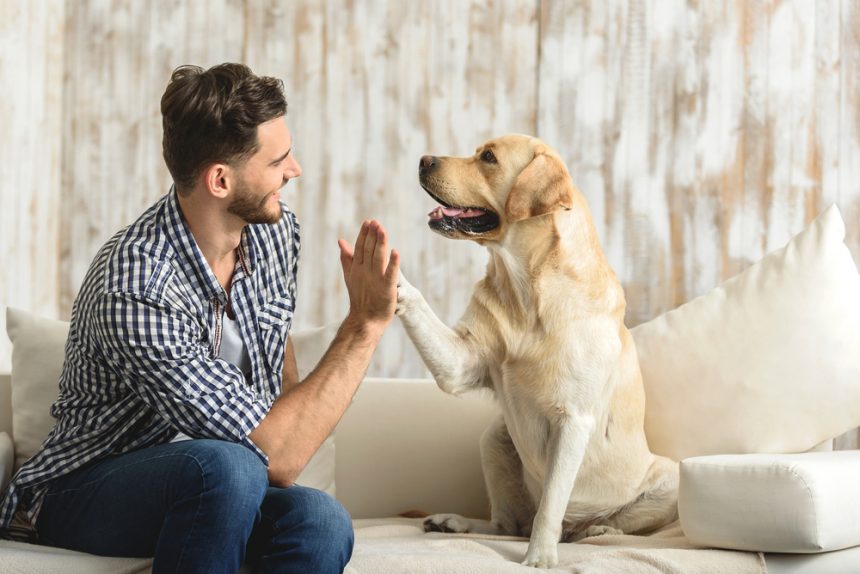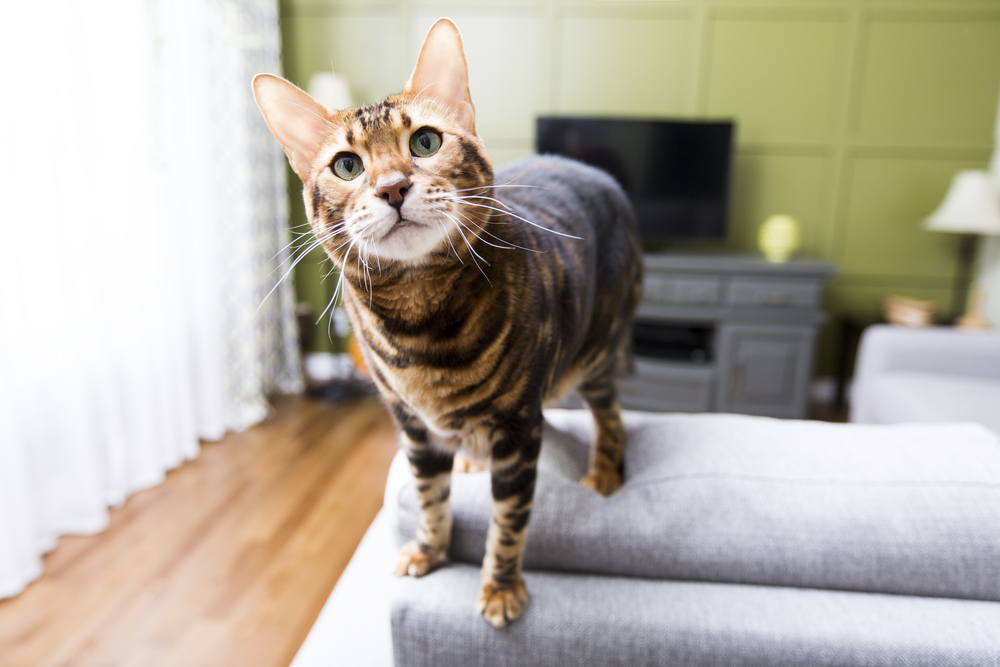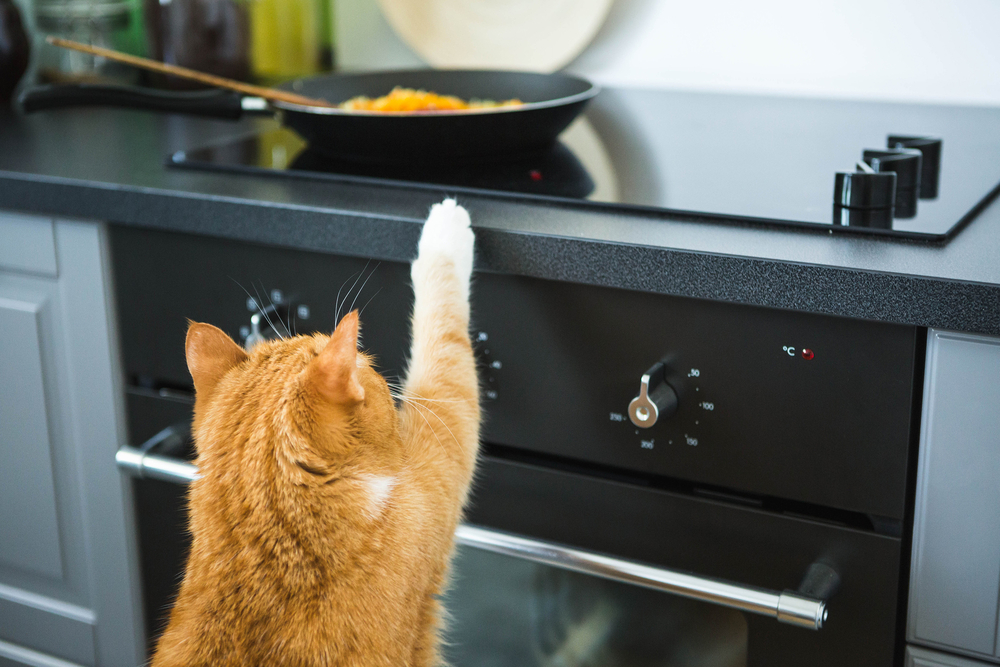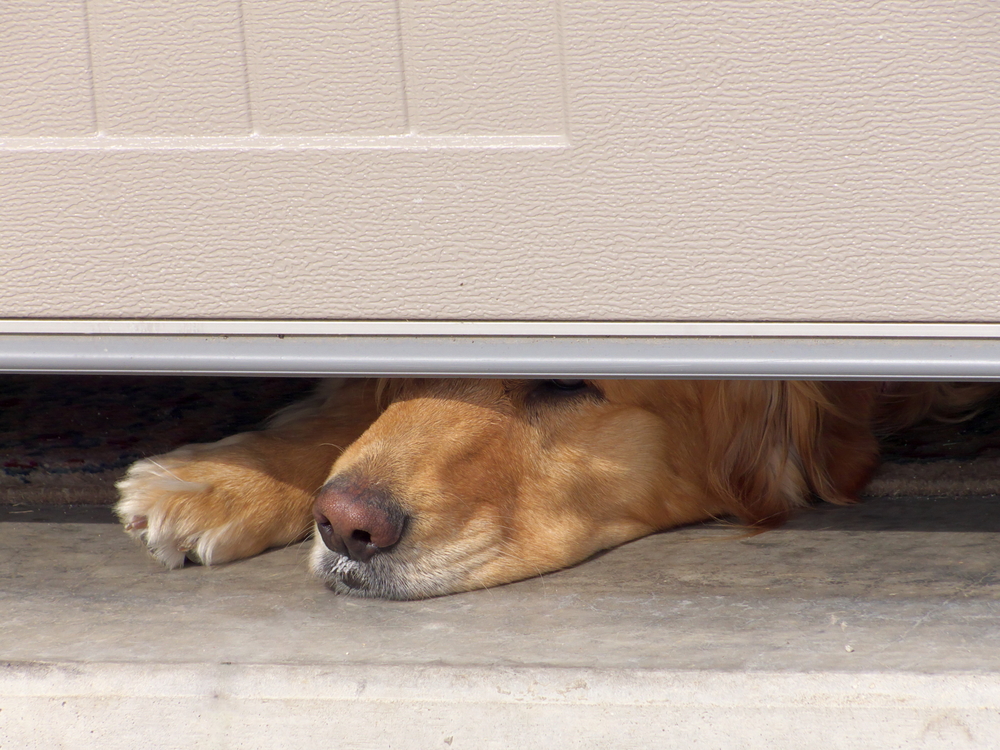If you’re bringing a furry friend home (or maybe you recently learned some hard lessons), you’re probably thinking about what you can do to keep them safe.
There are many hazards in a typical American home that can harm or even kill a small pet, so you must stay vigilant and keep an eye out for threats. Curious animals, like babies, need to be protected, and it’s your responsibility to put safety measures in place.
This article will focus on cats and dogs since they’re the most common house pets. All of our advice still applies to birds, ferrets, or any other animal companion living in your house with you.
Living Room
There are many things to watch out for in your living room. First, make sure you don’t keep heavy or sharp objects in elevated positions. Leaving loose objects out and in reach can lead to dangerous situations when curious paws find a new toy.
This is extra important when you’re taking care of a cat. Cats like elevated positions, since they can scope out their “prey” (which usually means a fellow pet). While they’re doing recon, they could easily knock something over and hurt another member of the household.
Protect your electrical wires. This is one of the most important tips you can take away from this article. Both cats and dogs like to chew on just about everything; wires are no exception. They’re small, they look like snakes, and your pet will attack. If you want to avoid electrocuting Fluffy, move those wires out of reach.
Make sure you move the cords to your blinds out of reach as well. They may not be as dangerous, but they can still be a choking hazard. At the very least, it’ll cause a massive headache for you when you go to open the blinds and find nothing there to grab.
Speaking of choking hazards, children’s toys can be an all-too-enticing treat for your little pup or kitten. Although let’s be honest—even your old salty dog isn’t immune to snacking on the wrong treat. Clean up toys as often as you can to avoid any emergency vet trips.
If you own a kitten, you’ve figured out by now that cats aren’t born graceful and coordinated. While your little fur baby is learning how to use its paws, keep valuables and trinkets out of reach. You can avoid the heartbreak of a family heirloom torn to shreds if you find a safe place to keep those items while your kitten grows up.
Here’s another cat tip: check to make sure all your vents and ducts are covered. You might think, “there’s no way Fifi could make it up there”, but we’re telling you right now—you’re wrong. Dead wrong. Keep those covers on or you might find yourself standing on a ladder with a flashlight and a handful of treats.
If you have a green thumb, or even keep a plant or two around the house, you should be careful. Certain plants are harmful to animals, and as we mentioned before, puppies and kittens will chew on anything. Here is a list of common house plants that are toxic for cats. Here’s another list of plants that are toxic for dogs. If you have a different pet, do a quick Google search to make sure you aren’t keeping harmful flora in the house.
Finally, pet-proof your furniture by buying corner protectors like this one. It probably won’t save you from every bit of damage, but couch corners are notoriously inviting for cats to scratch and dogs to chew on. Save yourself a few headaches and buy a guard.
Kitchen
The kitchen is probably the most dangerous part of the house for pets. There are sharp objects, heavy objects, hot objects, electrical appliances…the list goes on. We have a lot to get through, so buckle in.
First, make sure you don’t store pots and pans on shelves. The same goes for knives. Heavy objects in elevated positions can lead to serious injuries for your furry friends. Cats are the main culprits here, of course, but you can’t put it past a spry dog to get onto the countertop. Knives should be stored in closed drawers, and pots and pans should be kept as low as possible.
If you have a garbage can with one of those revolving lids, your first purchase should be an upgraded can. Both cats and dogs are famous for pulling a fun trick: they make all your garbage appear on the floor while you aren’t looking. Combat this mischief by buying a heavy can with a solid lid—step-to-open, if possible. Make sure it’s designed for human use only. Those revolving lids are all too easy to access, especially when there’s a reward like last night’s chicken wings inside.
Cleaning products are another consideration. Bleach and other harmful chemicals can cause serious injury to your pet. Use childproof locks to keep household cleaners in a safe place.
Never leave the oven unattended…which is a great rule to keep in general. Pay close attention while you’re cooking because pets don’t understand what the “oven on” light means. They can easily get burned if they smell a hot meal cooking and decide to get a taster while you aren’t paying attention.
Cats love crawlspaces and little nooks. This is known. Make sure you block any space around your oven and appliances, as they could easily get trapped in a bad situation and be unable to get back out again.
Make sure your cat hasn’t jumped into the dryer or washing machine before you turn it on. It’s unlikely that they’ll stay there if they see you invading their newfound safe space, but it’s still possible they won’t get out in time. Always check before you push the start button.
Keep food in plastic containers and avoid things like cling wrap and aluminum foil, which can hurt your pet if ingested. They might be so excited to try your leftovers that they forget metal isn’t edible. To be safe, keep your food out of reach, but preferably locked away.
Bedrooms
You might not think of a bedroom as dangerous for your pet, but there are still a few things to consider.
First, make sure your windows are secured with screens over them. Cats love to lie on the window sill to soak up the heat, and they’ll make a quick escape if they find their favorite spot is now a doorway to the outside world. Even if they don’t make a break for it, never trust a window mechanism to stay up indefinitely. It could fall and hurt your pet.
If you have a chair with a folding mechanism, or perhaps a recliner, always check underneath it before changing its position. Pets love to hide out under chairs and it’s easy to trap them inside. They can even be pinched by the metal mechanism itself.
Keep all of your laundry in a secured basket. Some pets like to rummage through the hamper when they’re bored and chew on buttons, drawstrings, and shoelaces. It’s important to keep these out of reach (you’re surely seeing the theme here) so they don’t choke or accidentally ingest one of those items.
As we mentioned above, cats love their small and dark spaces. A dresser drawer is like a dream then, right? Get into the habit of doing a quick sweep with your hand before you close drawers. Take a look around the closet before you close that door, too.
Garage
Your garage probably looks like a playground to your pet. There are all kinds of tiny objects, weird shapes, and fun smells to investigate. Let’s make sure we avoid any unnecessary damage or trips to the vet, shall we?
First, antifreeze. We haven’t tried it, but apparently, it tastes sugary-sweet to animals. Most homeowners have a bottle of it somewhere in their garage, so find it and make sure it’s locked away in a secure location.
You probably also have bags and bottles of pesticides, fertilizer, bug spray, weed killer, gasoline, oil, and cans of paint stored out there. All of these need to be stored in a safe place and out of reach of your animals.
Always keep small spare items like nuts, bolts, nails, and screws in a snap-shut container. Even better, get a locked toolbox to keep them in. You’ll sleep easier knowing that even if Fido gets into the garage, he won’t need an emergency trip to the vet anytime soon.
Here’s one more habit for you cat-owners to get into: before you get in the car, bang on the hood. You might find your cat curled up in the engine block and basking in the heat. The bang will clear up any misunderstandings between you two about the purpose of your vehicle.
Final Thoughts
The theme of this article can be boiled down to a few words: keep stuff out of reach. Also—cats love crawlspaces. If you keep both of those tenets in mind, you’ll be able to create a safer environment for Fluffy, Fido, and all your other furry friends










